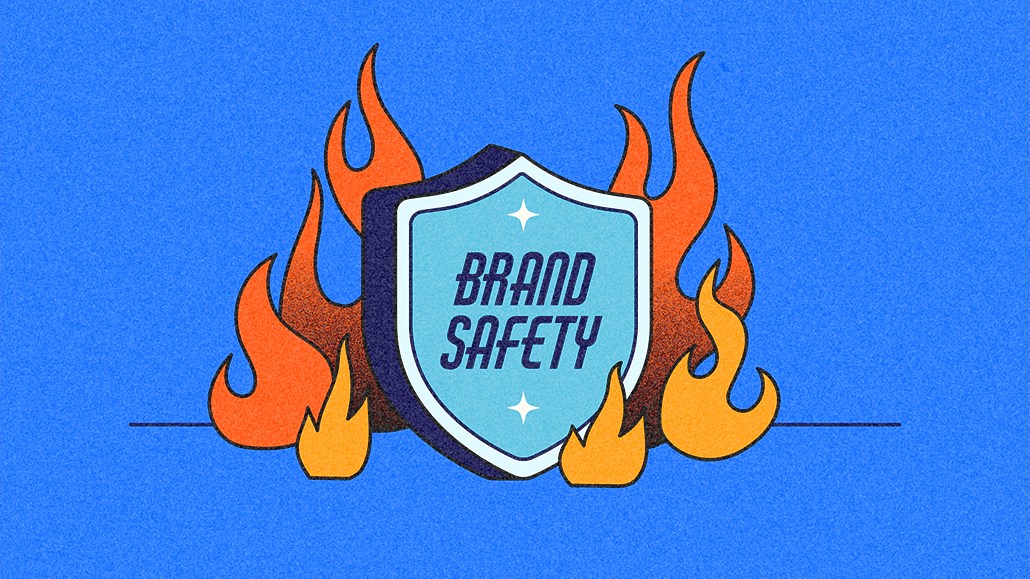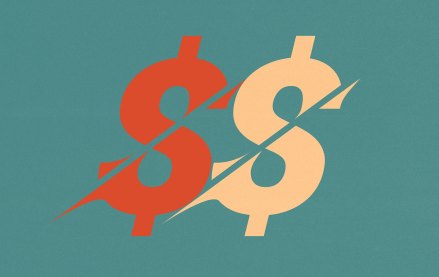Media Buying Briefing: Looks like brand safety’s back on the menu

This Media Buying Briefing covers the latest in agency news and media buying for Digiday+ members and is distributed over email every Monday at 10 a.m. ET. More from the series →
Once the U.S. presidential election was decided on Nov. 5, 2024, with former president Donald Trump defeating vice president Kamala Harris — an election that was certified only a week ago without attempts to overthrow the government, thankfully — there was little doubt the country’s mindset would shift somewhat rightward.
That shift took a decisive and intentional lurch rightward last week with Meta’s Mark Zuckerberg announcing he was dismantling the company’s fact-checking apparatus in favor of X’s approach to content moderation — community notes. The move, because it aligns with X owner Elon Musk, was largely interpreted as a means of currying favor with the incoming administration — which, it’s fair to say, Musk helped usher into power more than any single person or entity in the last year. Whether that’s true or not remains in the eye of the beholder.
But what it has done is open up a pandora’s box of concern around brand safety. X, after all, isn’t exactly known as the safest of places for brands, despite X CEO Linda Yaccarino’s best efforts to make it so. And the dismantling of the Global Alliance for Responsible Media was largely the result of Musk’s lawsuit against it.
So what’s a marketer to do with the leading social platform scaling back what many considered important brand safety efforts? The answer, seemingly, could become a boon for media agencies — even if it means a lot of hard work ahead. After all, nothing makes a media agency more invaluable to a client than steering them toward content that works for them — and away from adjacency to content that could hurt them or their reputations.
So, will agencies step up at a time when it’s safe to expect social media in general to be a less brand-safe place, even as the Zuckerbergs and Musks of the world insist their moves are in favor of free speech — a fundamental American right?
Three holding company representatives Digiday reached out to for comment for this story declined to make executives available.
The opportunity before them
But Jay Pattisall, vp and principal agency analyst at Forrester, who knows the media agency world well, explained that this reality creates an opportunity agencies would be well served to take advantage of.
“Agencies will need to become much more important to their clients, acting as an agent to make either brand safety decisions, media planning decisions and engagement decisions for audiences that are tailored and very specific to the risk tolerance of their client,” said Pattisall. That extends to “the client’s particular category, [as well as] the types of content and contextual environments that the client or the brand does or doesn’t want to show up in.”
Pattisall noted that the tools that GARM offered to brands and agencies were largely off-the-shelf, whereas now the opportunity exists to be much more tailored for each brand and media goal. “What’s happening here is the dawn of the customized approach to brand safety and media placement,” he said. “It’s no longer an off-the-shelf approach, and there are a whole set of tools now available that were not available 10 years ago.”
The responsibility of clearly explaining the amount of risk tolerance they can stand will fall on the brands and marketers themselves, which they will need to communicate to their media agencies. “This is an opportunity for agencies to play a more active role in in managing the optimization and incrementality of their clients’ brands’ paid media,” said Pattisall. “It’s also an opportunity for brands to take a more active role in establishing what their individual tolerances and contextual environments are.”
So are media agencies ready to tackle this sea change? For one thing, they’ve already invested time and hiring efforts around data science and analytics — elements necessary to monitor safe and unsafe channels for their clients. But only time will tell if they will adapt those departments to doing so.
Expecting a social Wild West in the short term
What’s clear in the short term is that, as the pendulum swings toward looser rules around content on the social platforms, it will be a bit of a Wild West before a new equilibrium is achieved, argued Sean Clayton, who founded Austin, Texas-based independent agency Myosin Marketing, and is an influencer.
Prior to launching Myosin in 2022, Clayton saw the way social platform algorithms work up close during his time working at Mindshare shortly after the pandemic started. And he said he believes the moves by Meta will ultimately generate brand safety via community notes much the same way a group of friends will protect someone from a bully.
“Gen Z has been screaming for this,” said Clayton. “If they are going to be the biggest spenders in the next five years— and that should be reshaping societal expectations — they are demanding vulnerability, authenticity and truth, and they’re demanding to do it through community. … They will hold accountable authoritarian stuff and misinformation where it pops in. And they’ll say, ‘hey, none of that.’ And they will start safeguarding the brands that are supporting them as a community.”
Will agencies shift their own thinking?
But will agencies, long known as bastions of progressive ideals — at least they make it look that way — begin to shift toward a more conservative approach in order to also curry favor with a more broad acceptance of conservative ideals? Again, time will tell, since most agencies reached for comment declined to do so. But Jay Wilson, vp and marketing analyst at Gartner, said he thinks agencies will go where the money is.
“Agency leadership will tend to follow the money wherever that money goes,” said Wilson. “And that then introduces [the possibility of] an agency leader or a holding company perhaps moving in a different kind of political direction than the base of its employees.”
(For example, Stagwell CEO Mark Penn had a livestreamed conversation on X during CES with Musk — something that no agency would have considered doing two years ago, given brand safety issues. Penn has not hidden his own conservative tendencies on his X feed. Whether that will lead to any brain drain at Stagwell remains to be seen.)
What it all comes down to, added Wilson, is that agencies will have to work harder for their clients. “Brand safety will continue to be an issue,” he said, “and it’s just going to take a lot more work to ensure brand safety, if the major platforms are not working that angle on behalf of advertisers.”
Color by numbers
Marketers in the B2B world say lead generation is their biggest priority in 2025, but it will be a big challenge as competition rises in this sector. As businesses try to lower costs, more may turn to multi-channel campaigns — with a lower cost per lead — than single-channel content. — Antoinette Siu
Here are some insights from sales platform Sopro:
- In the last year, 45% of businesses reported struggling to generate enough leads — with the lead quality one of those biggest challenges for B2B companies.
- More than 60% of marketers said their customer acquisition costs have increased in the past three years.
- 42% of businesses reported on issues like low-quality or irrelevant leads.
- Multi-channel marketing campaigns see a 31% lower cost per lead (CPL) than single-channel outreach, and 68% of marketers said social media helped them generate more leads, while paid campaigns can achieve even better results.
- More than three-quarters (76%) of marketers look to content marketing as the most effective way to reach prospects.
Takeoff & landing
- Publicis hired Geoff Calabrese, the longtime head of investment for Omnicom Media Group, to be its new chief commercial officer. In December, Calabrese had been moved to CEO of North American investment at OMG, replaced as chief investment officer by Katie Klein.
- Matt Seiler, a longtime media agency exec with decades of tenure at Omnicom and IPG, launched a new consultancy called Excelerators, which is designed, in his words, “to help companies define (and address) their most critical strategic and organizational design opportunities.”
- Stagwell’s Assembly named Kacper Klos CEO of its Digital Commerce unit. The co-founder of Brand New Galaxy, which Stagwell acquired in 2022, Klos has been the principal architect of Assembly’s expansion into digital commerce.
- Chicago-based independent Empower Media landed media AOR duties for southern fast-food chain Whataburger.
- And in small, but grammatically important news, the 4As has rebranded by finally dropping the apostrophe in its name. The industry organization for ad agencies is also relaunching its website.
Direct quote
“This is, in our view, an attempt by Amazon to monopolize the retail media ecosystem and it poses a real threat to other retailers. You could even say the industry saw this move coming, as we’ve seen big retailers already moving away from AWS recently. The battle for who comes out on top in the retail media space has been accelerated greatly. We see this as a fork-in-the-road moment for retailers who want to own their own destiny.”
— Regina Ye, CEO and co-founder of Topsort, a retail media infrastructure platform, responding to Amazon’s move to launch Amazon Retail Ad Service, which lets other companies buy its retail ad tech.
Speed reading
- I wrote about a series of moves Omnicom Media Group made in the expanding realm of search, with partners including Google, Amazon Ads, TikTok and Roku. All were unveiled during CES.
- Speaking of CES, check out Digiday’s coverage of the tech fest, led by Tim Peterson.
- I also took a look at other issues the agency world will need to grapple with and take advantage of as the Trump 2.0 era begins.
- Digiday’s research experts Li Lu and Catherine Wolf assembled an exhaustive report on where agencies stand in the development of AI.
More in Media Buying

Why Pinterest wants to buy tvScientific, and what it signals for the CTV ads business
Corporate development sources estimate the deal valuation to be above $300 million, claiming tvScientific’s gross revenue is approximately $100 million.

Ad Tech Briefing: How the experts predict digital ad spend will pan out in 2026
Advertisers are placing greater emphasis on price and performance, often at the expense of transparency and control.

Crossmedia and Mile Marker make moves now to grow in their rosters in 2026
Both independents made executive moves to harness a potential windfall of clients leaving the holding companies for better service and results.








